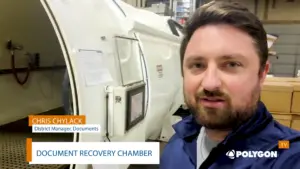Credit Card-to-Token Offerings Update
Technology is evolving, and financial institutions are struggling to stay ahead of security requirements related to personal data protection. While credit card transactions continue to present the highest opportunity for fraud, the continued proliferation in debit card use (where funds are directly withdrawn from an individual’s checking account) exposes the entirety of a person’s account with each swipe. In response to this, processors, banks and card issuers have updated the way daily transactions are conducted.
Personal Data Protection
Many have heard the term PCI Compliance, yet likely wonder what all it entails. It is a standard that all financial institutions, processors, and credit card accepting merchants must meet in order to process credit cards. It insures that both communications are secure and processing methods are safe, and that all possible precautions are taken to protect the cardholder’s personal information from being stolen. PCI Compliance standards prompted the implementation of chip cards. Commonly referred to as EMV (European MasterCard Visa) processing due to its use and popularity throughout Europe and Canada for many years, these microchip-embedded plastic credit cards offer more security over mag stripe cards.
What’s the difference between Mag Stripe and Chip Card Security
Most people are familiar with inserting a card in a reader and pulling it out or swiping it down through a card swipe reader. Those readers are designed to pull the data from the magnetic (mag) stripe, identifying the card holder, bank account and PIN-matching records.
While the chip on a chip card stores the same information, the security of a chip reader is more sophisticated than that of a mag stripe reader. If someone copies a mag stripe, they can easily replicate that data over and over again because it doesn’t change. Some maintain that information can be pulled from a card’s mag stripe just by being in close proximity to a scanner. However, a chip-embedded card requires direct contact with a chip reader in order to capture the data, creating a unique transaction code that cannot be used again, providing extra layers of security.
Certification Process
The design is not the only challenge of implementing new card reader technology—the EMV certification process can be long, arduous and expensive. First, the card reader and modem/communication device each require certification. Further, those two items must be certified for use together. The processor with which they communicate must also receive certification. And further, the individually approved devices and processor must receive certification as a whole, resulting in several separate, unique certifications. Hence, the years-long delay of the self-service, micro transaction kiosk market’s implementation of approved products for use in U.S. industries.
While proliferation of these EMV systems has earnestly begun, the price points are not very competitive yet. With only a few competitors in the game, the partners that have the solutions are trying to recoup some of their upfront certification costs.
New Devices Compatible with Standard Change Machines
Standard Change-Makers has been working with new EMV-approved devices for several months now. Below are a few of the proven devices that have been fitted to our machines, bench tested, and deployed in the field.
NAYAX VPOS & AMIT
Nayax USA (Hunt Valley, MD)
https://www.nayax.com/cashless_payments/
For merchants experiencing charge-backs from various banks for non-EMV compliance, the Nayax has proven to be a cost-effective solution. The MDB version of the EMV certified VPOS card reader and AMIT telemetry device will work with all Standard Change-Makers credit card-to-token change machines.
With the purchase of a retrofit kit, merchants can remove an existing mag stripe reader and replace it with a VPOS reader. The VPOS reader has a mag stripe swipe, chip card insert, and near-field reader. It is also mobile phone compatible with Apple Pay and Google Pay. The AMIT device can be connected by an Ethernet cable to a high-speed network router or use the cellular feature for a monthly fee.
To work with Standard equipment, an MDB-enabled version must be purchased. And to process credit cards, customers must purchase the kit directly and sign up for a merchant account with Nayax. For new machine orders, clients simply ship the kit to Standard for installation.
This solution has proven exceedingly reliable for more than two years.
ePORT
USA Technologies (Malvern, PA)
https://www.usatech.com/products-services/eport-cashless-hardware/eport-g10-s
Although similar in appearance to the Nayax card reader, the USA Technologies ePort G-10 differs somewhat. Similarly, the ePort reader can handle mag stripe swipes, chip card inserts, as well as near-field and mobile phone payment apps (Apple Pay and Google Pay). However, it does not come equipped with an Ethernet port and is only compatible for cellular processing via Verizon’s 4G/LTE network. Further, it isn’t EMV certified for chip card processing, though purportedly, USA technologies is currently working toward that certification process. So, while these readers are equipped to handle EMV processing, they are technically not compatible as of yet.
With 10-15 machines boasting the ePort solution shipped, Standard can ensure that the interface and technology are both compatible & reliable in the field.
PLEASE NOTE: On both the ePort and Nayax websites, the acronym DEX is frequently referenced. DEX is an accounting and remote management protocol used by the vending industry, allowing for coordination between the main office and drivers as they collect and restock snack and soda machines along their routes. Drivers are equipped with DEX devices that collect data on items purchased and funds collected which is communicated to the company’s computer when plugged into the telemetry device. DEX protocol solutions only apply to vending operations, and are not applicable to laundry or car wash companies.
CryptoPay
Genesys Technologies (Colorado Springs, CO)
http://www.getcryptopay.com/index.ph
CrytoPay is a solution that has taken the car wash industry by storm. CryptoPay uses a mag stripe card reader that immediately encrypts the data and wirelessly connects to a “CryptoPay Coordinator”, a device that is connected to the internet. This secure processing method is inexpensive, and each merchant account has access to the remote management dashboard. Popular due to competitive rates and an easy installation process, this solution’s success has expanded to the coin op laundry industry in recent years.
However, CrytoPay doesn’t offer a chip reader solution and isn’t actively pursuing an EMV processing certification. Thus, this solution is not ideal for businesses experiencing non-EMV compliance charge-backs.
Standard has met with favorable success bench testing the interface with CryptoPay, and currently has only a few active field sites using the CryptoPay system in our equipment.
IPTran LT with iUC285 Solution
Datacap Systems and Ingenico Technologies
https://www.datacapsystems.com/ingenico-iuc285/
Standard Change-Makers’ engineering staff has also been working on a long-term solution for EMV compliance utilizing the Datacap Systems IPTran LT device for embedded systems, and the Ingenico Technologies iUC285 “All-in-One” Card Reader.
The IPTran LT is the newest generation of processing communication devices that meets compliance standards for internet-based processing. Unlike the previously mentioned systems, merchants are not tied to one specific processor. With IPTran LT-based processing, merchants can choose from multiple processors, including First Data, Heartland, Global Payments, Sterling Payments, Paymentech, and more. The iUC285 is a mag stripe, chip card insert, near field contact (tap-n-go), and near field contactless card reader that is compatible with the IPTran LT.
Standard has also been designing a new color touch screen that will work with the IPTran LT/iUC285 solution. The touch screen will replace the two-line LCD display and four selection buttons currently used on Standard credit card machines. The touch screen would provide a more intuitive user experience, as well as up to eight package selections. Bench testing is on-going, and the next step will be incorporating the components into a cabinet design.
Standard Change-Makers are planning to have a total machine design in both front & rear load cabinets by the end of 2019.








